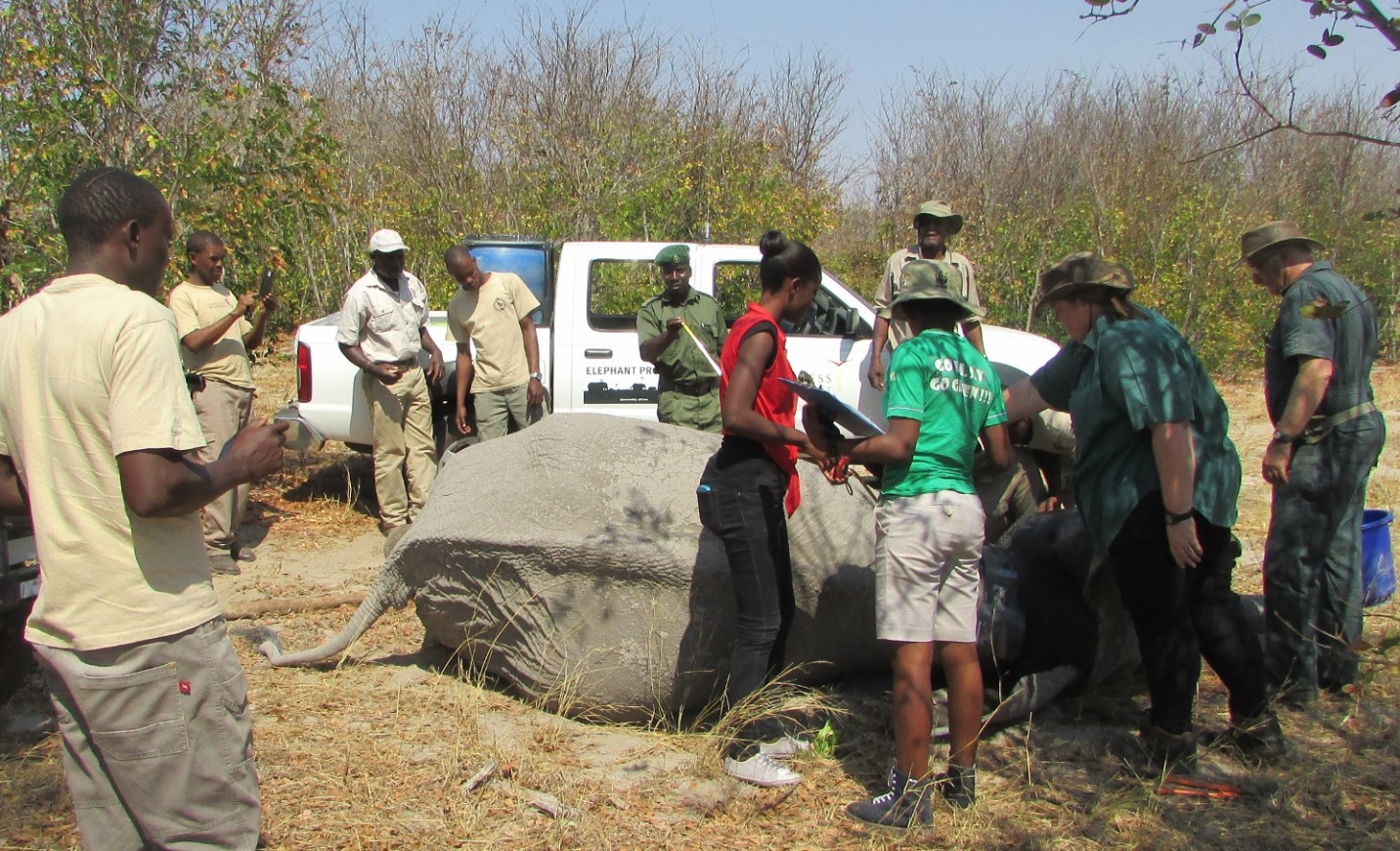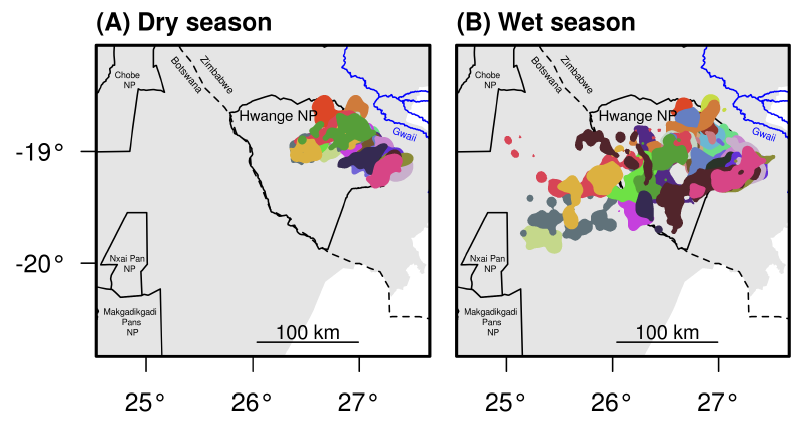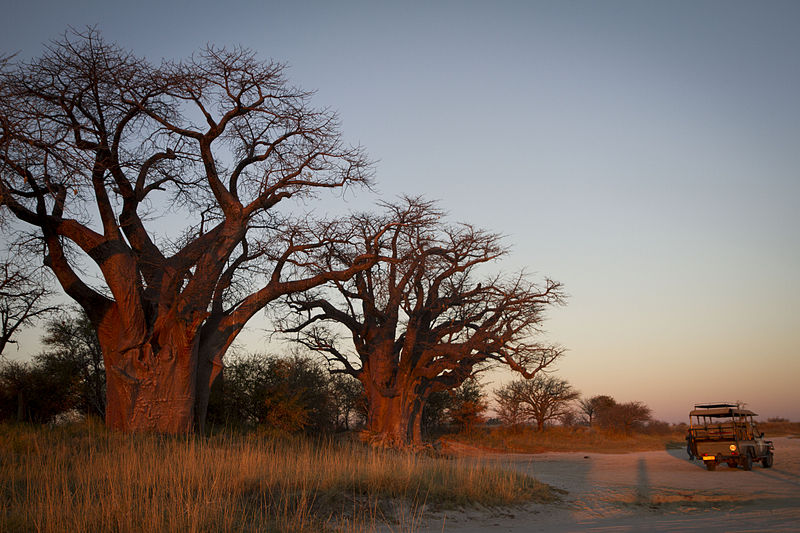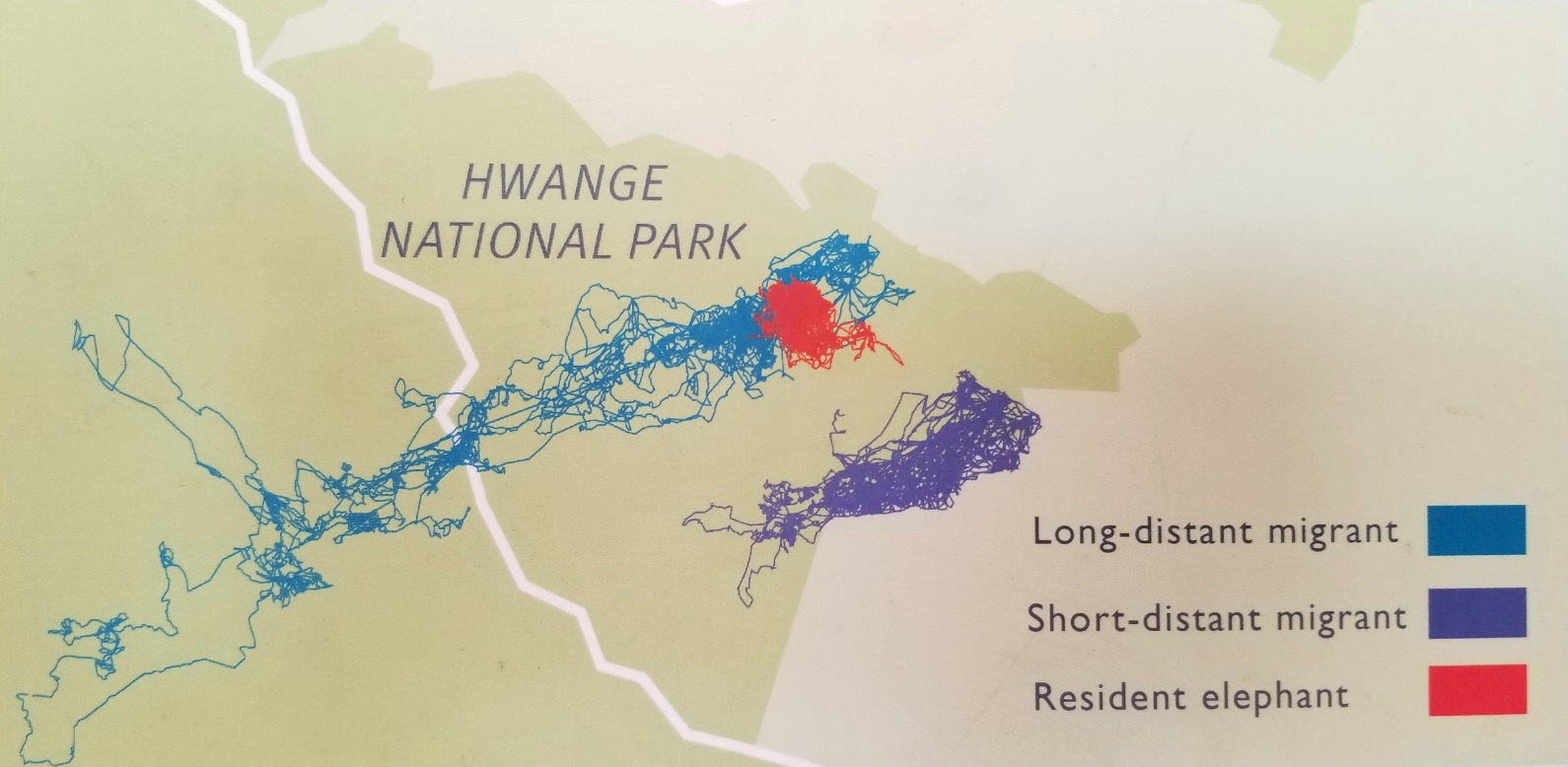- Elephants in Zimbabwe’s Hwange National Park wearing GPS tracking tags shared a general dry-season home range but followed three different wet-season migration strategies: residency, short-distance migration, and long-distance migration.
- Despite similar dry-season conditions that kept all the tagged elephants near provisioned waterholes, the migrating elephants began their seasonal movements at the onset of the first rains.
- Scientists urge collaboration among stakeholders and countries to maintain the long-distance, cross-border migrations some animals need to survive.
African elephants use areas of grassland, bushland, and woodland, but how do they move through these different vegetation types in different seasons, especially where water becomes a seasonally scarce resource?

Researchers in Hwange National Park in Zimbabwe have been monitoring the movements of 32 female elephants over the last several years to find out. Some, but not all, of the elephants migrated seasonally, up to 250 kilometers (155 miles) from their tagging site. Using GPS/VHF radio tracking tags, the researchers are studying the variability in and potential drivers of the elephants’ movements over time, including these seasonal migrations.
Arnold Tshipa, the Zambezi region environmental officer for Wilderness Safaris, leads the field work. Tshipa is also writing his master’s thesis at Zimbabwe’s National University of Science and Technology on the migration of Hwange’s elephants with technical guidance from France’s National Center for Scientific Research (CNRS) and support from both institutions.

Tshipa and his fellow researchers tagged the elephants in the northeastern section of Hwange to better understand how female elephant move around and use different habitats in and around the park, as well as their population dynamics, given Hwange’s high density of elephants. Census data suggest that 45,000 elephants live inside Hwange National Park, more than half of the more than 82,000 elephants estimated for Zimbabwe as a whole, leading to an estimated density of three elephants per square kilometer (5 per square mile).
Tshipa and colleagues suggest in their 2017 publication that the Hwange elephants are part of the world’s largest elephant metapopulation, which stretches across five southern African countries in the Kavango-Zambezi Transfrontier Conservation Area (KAZA). The researchers used daily location readings from the tracking tags to chart the seasonal movements that separate the subpopulations geographically and reconnect them during the wet season.

Previous research has confirmed wide-ranging, cross-boundary movements of elephants across areas of natural vegetation in the KAZA region, highlighting the need for cross-border movement corridors and coordinated planning and policies. The movement data gained from wildlife tracking tags can improve the effectiveness of broad-scale conservation efforts by assessing current reserve boundaries, designing linkages between reserves, identifying stakeholders whose management influences tagged animals, and helping various stakeholders coordinate management efforts across the animals’ areas of movement.
A partial migration
Tshipa and his colleagues have focused their analyses on the elephants’ use of space during two key periods: the late wet season in February and March, and the late dry season in September and October. They have categorized elephant movement behavior according to the distance between each animal’s respective wet- and dry-season ranges. Longer-distance migrations are those with greater distance and less overlap between the wet- and dry-season ranges.

Tshipa said the team classified 10 of the 32 tagged elephants as “resident” elephants. For these elephants, the center points of the dry-season and wet-season ranges were less than 50 kilometers (31 miles) apart, and there was more than 50 percent overlap between the two range areas.
For the rest of the tagged elephants, deemed “migratory,” there was less than 50 percent overlap between their dry- and wet-season ranges. The distance between the center points of these two seasonal range areas distinguished the short-distance migrants from the longer-distance migrants. Range centers of the 12 short-distance migrants were less than 50 kilometers apart, while those of the remaining 10 long-distance migrants were farther apart, up to 160 kilometers (99 miles).
Eight elephants migrated into Botswana, as far as the Nxai Pan, some 260 kilometers (161 miles) from their tagging area. This normally dry salt pan becomes grassy in the wet season, attracting elephants and thousands of other large herbivores, including zebra and wildebeest.

Rainfall decreases as one travels west from Zimbabwe to Botswana, so the elephants that migrate do so at the onset of the wet season. “It starts as soon as we have the first few rains,” Tshipa said. “Once they see those first few rains, they start moving.”
Nevertheless, Tshipa added, “there’s a lot of variability in distance and time spent. Some spend a long time in Botswana, while others go just for two days. We still don’t know how much of the population actually does this; 22 percent of the tagged elephants do, but how much of the population do we have?”
The eight tagged Hwange elephants that migrated to Botswana stayed longer in private wildlife management areas than in formal protected areas, confirming the importance of the private sector in elephant conservation. Their movements also support the establishment of region-wide elephant management policies to address, for example, how institutions should respond to any changes in water supply in Hwange National Park, through human action or more severe droughts, that could dramatically affect elephants’ distribution in this region.
What drives elephants to move?
The Hwange researchers are particularly interested in the transboundary movements the elephants repeated over several years and what might be driving them.

Humans have altered much of the arid region’s landscape, including provisioning water for wildlife within national parks and game reserves during the dry season, which Tshipa says is driving migrations. Unlike their wide ranging during wet season, both resident and migratory tagged elephants returned to and were faithful to their smaller dry-season ranges.
In the dry season, the researchers state in their paper, elephant breeding herds forage within 15 kilometers (9 miles) of water. The dry-season ranges of the tagged elephants all include permanent waterholes. Hwange National Park lacks a permanent river, and during the dry season water is available primarily at the waterholes.
A natural migration may have occurred before the provisioning of water, Tshipa said, comprised of elephants migrating further north to the Gway River. “That might have been a migration route,” he said, “but now because there’s water holes dotted all over the place, there’s no need for [them] to proceed to the river.”

Moreover, hunting occurs at the river but not at the protected waterholes, making them more attractive areas for elephants. “Most of the collared elephants are not crossing into that hunting area, and if they do, it’s a very quick cross into and back out,” Tshipa said.
The ranges of the elephants during the wet season, when food and water are more widely accessible, are all larger than their respective dry-season ranges. Having determined that water supplies drive migration patterns, the Hwange researchers are studying whether other factors, such as habitat structure, demography, or competition, play a key role.
“It’s always difficult to separate water from vegetation,” Tshipa said, “because one is linked to the other. So we’re asking how do distance to water and habitat structure influence the migration route.”

The researchers have categorized the cross-border study zone into open grasslands, bushlands, and woodlands. They are analyzing how the animals’ movement patterns within each of these habitats relates to their distance to a water source, or, for example, whether the distance to water affects how elephants move while in woodlands versus when they are in open grasslands.
Tshipa and colleagues are also beginning a study of the role that the quality and quantity of elephants’ food plays in their migration. All the study elephants used the same general area in the dry season, so the quality of food in their dry-season ranges is unlikely to drive some to migrate and others to remain in the area. Given the substantial energy expended in long-distance migration, the researchers will examine the amount of suitable wet-season food along transects as well as the dung of the tagged elephants, to determine what they are eating (e.g. higher-quality grasses versus bark).
Citation
Tshipa, A., Valls-Fox, H., Fritz, H., Collins, K., Sebele, L., Mundy, P., & Chamaillé-Jammes, S. (2017). Partial migration links local surface-water management to large-scale elephant conservation in the world’s largest transfrontier conservation area. Biological Conservation, 215, 46-50.
FEEDBACK: Use this form to send a message to the editor of this post. If you want to post a public comment, you can do that at the bottom of the page.